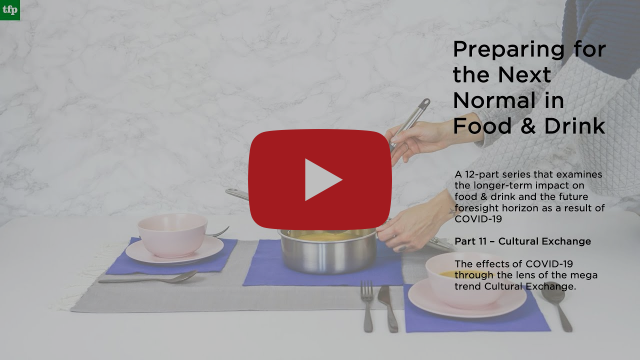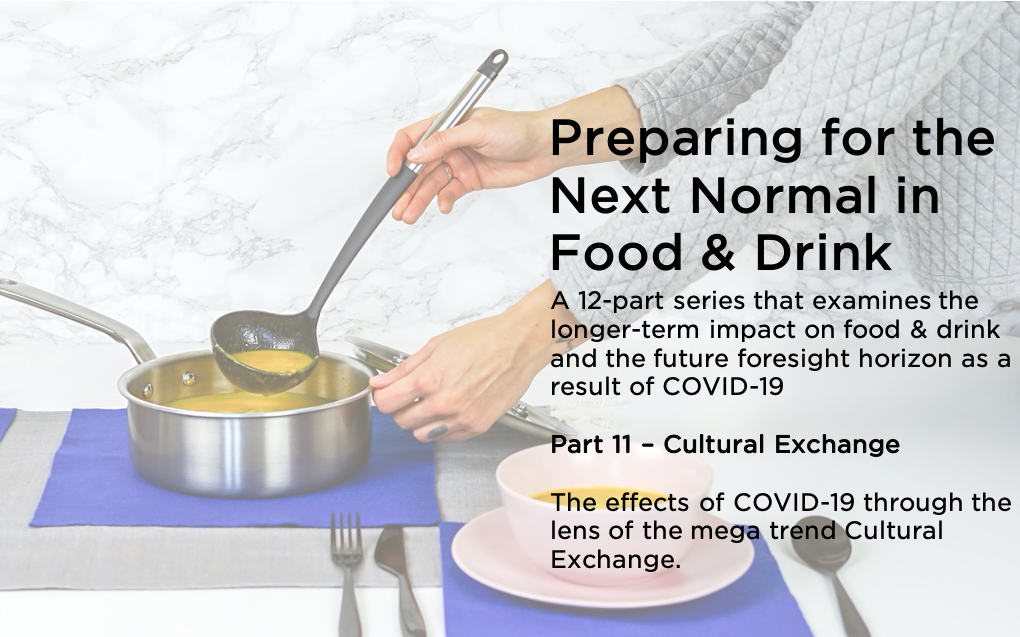
In this article we look at Cultural Exchange that sits as part of the wider social trend 'Cultural Creativity', a wider cultural movement centred around openness, creativity and celebrating each other. Through collaboration and engagement with other people, we can discover new, different ways of thinking, working and (of course) eating! In other words, openness and creativity can stimulate our minds… as well as our tastebuds.
Travel as we knew it may be impeded at the moment but our appetite for cultural discovery travel and learning new things is as strong as ever. Indeed, the lines between education and entertainment grow ever more blurred… And now having had the time reflect, self-educate and cook more(!), consumers are taking to the digital space to learn the craft behind food cultures dishes and products. And in this trying time, 'sharing is caring' has become the mantra… Across the food & drink industry, people, consumers and experts alike are sharing their knowledge, expertise – and even their secret recipes! It's all about a coming together.
If you'd like to watch the supporting video, click the link below.
Crafty Collaborations:
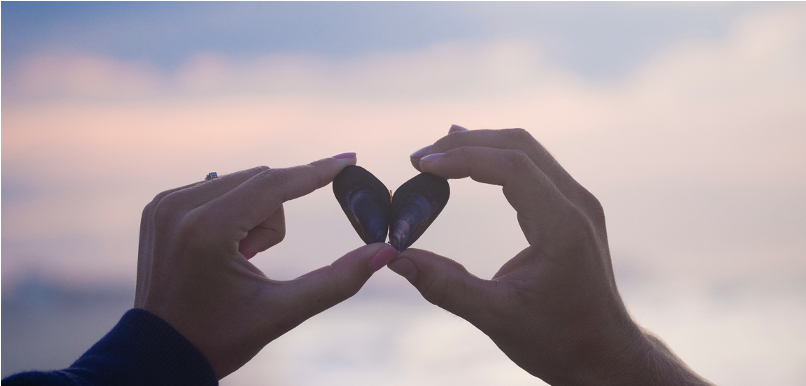
Collaborating has long been a core principle of the food industry; particularly within foodservice where chefs collaborate, share skills and learn from one another which drives the evolution of craft and innovation. For many craftsmen, 'collaborating' is all about making their craft more visible and better understood – whether this be with others in the industry or through sharing information with the public. There are so many different ways and platforms through which to collaborate… limited edition products, restaurant pop ups, social media campaigns, cookbooks, brand tie ups, joint projects – the list goes on.
We've seen collaborations across the food spectrum - from fine dining (e.g. Phil Howard's Elystan Street has teamed up with Kitchen W8 and Church Road for a delivery service) to street food (e.g. London pizza slingers Yard sale have teamed up with kebab institution Mangal II for a mash up pizza special with sumac onion, Turkish cheese, garlic sauce and lamb kofta... yum!). But also, Ikea & Pizza Hut to create a new pizza table, box combo. Whilst collaborations such as live events and pop ups may have been paused for the time being due to the current crisis, ways to partner up/ connect with each other and audiences is forever increasing. Social media has become a huge part of our lives and it is currently even more important as a means of communication; now we see it evolving and other forms of online interaction becoming mainstream – from IG live sessions to virtual clubs for 'live' events and anything in between.
Collaboration isn't just about food businesses coming together, it's also connecting at a deeper level with customers to better understand the process of getting food from farm to fork. We're seeing the food & drink industry go online with Q&A sessions, cookalongs, masterclasses to promote the cause whilst developing new, long lasting connections with butchers, bakers, cheesemakers, farmers, barmen and baristas.
There is opportunity to collaborate with others particularly where there is a shared purpose, cause or audience for a great good and mutual benefit.
Tame That Flame:
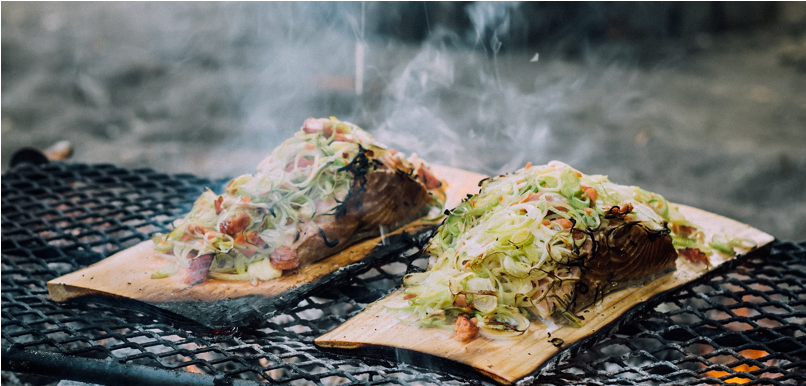
Live fire cooking may be an age-old technique, but it has undergone a renaissance in recent years. And we aren't just talking the American BBQ folks… whether they are using a wood fire grill, plancha, smoker, asador, mangal, tandoor, ocakbasi or something else entirely - all manner of globally inspired chefs/ restaurants have been harnessing the power of smoke and flame to take their dishes to the next level. There is no mistaking that it involves serious craftsmanship to get this spot on. Globally, the best chefs will experiment with types/ sources of wood (after all, olive and chestnut wood impart totally different flavours), levels of heat in the fire (e.g. combining low and slow roast with hard char over direct hear), and so on.
Chef owner of Bratt, London, Thomas Parry spoke at our 2019 trends event and said 'how important it was to pick your wood/ charcoal carefully as all variations give off diverse flavours/scents and burn differently. We carefully select wood by researching which variety compliments the cooking and the heat we require; it is very important that you know the ingredients of your fire'. Tomos also touched on sustainability - 'it not just where you get your wood, but how you can use the energy, everything is done with the land and environment in mind, constantly questioning and challenging ourselves'
Even though restaurants have been closed in recent months and the 'pause' button on their missions hit, the ever-popular art of fire cooking has carried on unabated… garden BBQ's have provided the perfect means for consumers to socialise within their permitted 'social bubbles'. At the moment it's home cooks that are flying the fire cooking flag and whilst building their skills they can be just as keen plus adventurous as their professional counterparts when it comes to flavour, formats and twists – we've seen everything from Bánh mì burgers to jerk chicken skewers, chicken shish to Thai hot dogs, but, it's not all about meat, vegetables, greens, bread and desserts getting a touch of the flame licked action.
There remains significant opportunity in and around fire cooking and barbecues; from BBQ kits to BBQ based chef collaborations with sauces, rubs, marinades, meat and bread as well as expanding the repertoire to encompass global flavour and format opportunity.
Edu-tainment:
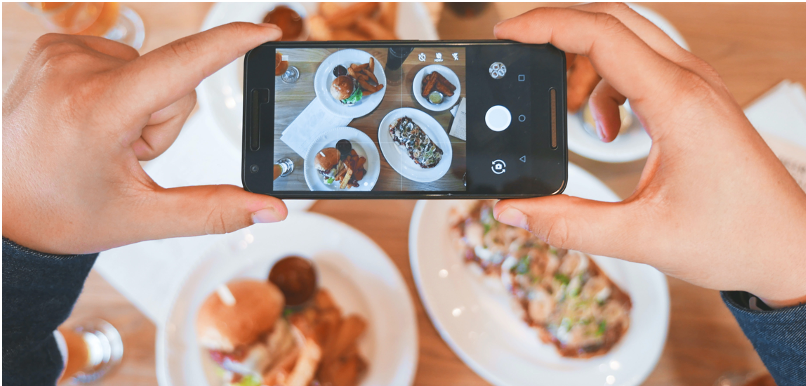
Rather than just eating, consumers have long been keen to connect with their food, understanding the farm to folk process involved in making it. This has really helped boost the popularity of craft and heritage brands, not to mention cooking classes; a product is really set apart from the crowd when customers understand the who, the time, the love and craftmanship that has gone into what they are eating.
However, things are a little different now. With restaurants and bakeries having been closed, it's harder to make that connection… but, that doesn't mean consumers appetite for learning has disappeared. Cue virtual initiatives where individuals and brands have allowed consumers to engage in their own home to learn a new skill or process - from making hollandaise by Thomas Keller to Wagamama's Katsu curry and Ikea's iconic meat balls. This is all about combining education with entertainment which is also a great way to connect with loyal fans and customers whilst they are stuck at home. And, as we've spoken about in previous articles, 'sharing is caring'; many people are providing free online content simply because it's the right thing to do.
The opportunity exists to maintain the momentum of brand presence in the home beyond the crisis. This will allow consumers to continually build on the skills learned and the appreciation of the process that lockdown afforded, both in retail and out of home.
Generational Exchange:

As the pace of life has slowed down for some people, there has been time for reflection, cooking, gardening and of course family activities. However, with uncertainty everywhere, it has become ever so hard to plan ahead. As a result, rather than hatch future plans, many people have found themselves using the lockdown period to look back and reflect. Cooking, (and eating!) has never played a more central role in our lives; in a bid to find comfort through nostalgia, many have found themselves digging up old family recipes or recreating childhood favourites… you can't have missed the old school cake tray bakes on social media.
Social media feeds are flooded with retro recipes, dishes with historical concept and comfort that that is 'just like granny used to make'. These nostalgic treats are everywhere, consumers just can't seem to get enough, and restaurants and retailers alike are taking note. We are now seeing a plethora of products and dishes that are all about comfort familiarity, history and sentiment from 70's, 80's and 90's classics - Lambrusco, sherry, prawn cocktail, Baked Alaska and trifle are firmly back in style. Also, chunky pork pies, retro ice lollies, deep pan pizza and choc chip cookies and it hasn't stopped there – one pot slow cooking, soda bread and cheesecake.
Despite the unwinding of lockdown, the overriding consumer sentiment is around uncertainty with particular regards to public health and economy. As such the notion of safety, security and comfort through food will remain an opportunity for the foreseeable future.

In this article we've highlighted the relevance and shifts that are likely to evolve and develop in the COVID-era through the lens of Cultural Exchange. By considering these shifts and how you as a business, brand, start-up or entrepreneur, pivot and adapt in consideration of them, will mean that you're well positioned to succeed in this COVID-era in food & drink.
In article 12 we'll be looking at the social driver 'Cultural Creativity', looking at the mega trend Cultural Transformation through the lens of the COVID-19 and the longer terms shifts that we expect to see manifest.
So join our TFP community for the details of article 12, our recent special articles and all the latest food & drink trends foresight. Visit thefoodpeople.co.uk or click here and complete in the footer!
Stay safe, keep well and we'll see you in article 12.
